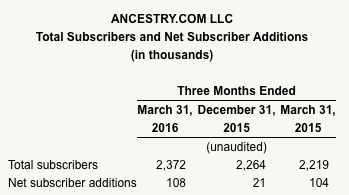26 How Important is Privacy? – A Case on AncestryDNA
How Important is Privacy? – A Case on AncestryDNA
BIOT 6610
Madison Veperts
It was an unusually cold December day in Lehi, Utah, United States, as Tim Sullivan, President, and CEO of AncestryDNA picked up the ringing phone. He was in a relatively good mood after having found out the total revenues for the year of 2014 were 619.5 million dollars (“Ancestry.com LLC Reports Fourth Quarter and Full Year 2015 Financial Results | Ancestry Corporate,” n.d.). Unfortunately, this was not a pleasant phone call and his mood would change quite drastically. The police were on the other line with a warrant to seize the name of a customer of AncestryDNA (Rybak, n.d.). They had used one of Ancestry’s public databases to search for a match of DNA that was found at a crime scene (Rybak, n.d.). Tim had no choice, but to hand over the name of Michael Ursy to the Utah police department (Rybak, n.d.).
After becoming the CEO of this company in 2005, Tim never thought it would ever come to this. When he first became the CEO, AncestryDNA had just opened a new head office with more than 700 employees (“AncestryDNATM | DNA Tests for Ethnicity & Genealogy DNA Test,” n.d.). Their main focus was to connect family members and create genealogy family trees (“AncestryDNATM | DNA Tests for Ethnicity & Genealogy DNA Test,” n.d.). As technology started to improve and DNA sequencing of humans became something of the present and not the future, Ancestry started to move towards connecting people through genetics rather than surnames. It all started with the purchase of acquiring the DNA collection of GeneTree in 2012 (Genealogist, n.d.). GeneTree was the commercial arm of Sorenson Molecular Genealogy Foundation (SMGF), an independent DNA and genealogical research institution with a goal of demonstrating how the peoples of the world are related (Genealogist, n.d.). SMGF had collected more than 100,000 DNA samples that were donated from people around the world (Genealogist, n.d.). A year after that, they purchased the records of a South African genealogy website called Ancestry24 (“Ancestry.com | Ancestry 24,” n.d.). From this company, they had received more than four million South African records (“Ancestry.com | Ancestry 24,” n.d.). With these purchases, they were able to build a large enough database to start connecting family members by DNA and called this AncestryDNA.
AncestryDNA worked by having the customer send in a saliva sample done by spitting into a test tube (“AncestryDNATM | DNA Tests for Ethnicity & Genealogy DNA Test,” n.d.). They then take this sample and analyzed it for more than 700,000 markers (“AncestryDNATM | DNA Tests for Ethnicity & Genealogy DNA Test,” n.d.). These are known as genetic markers and are genes or DNA sequences that are well known (Elliott & Brodwin, 2002). People have many distinct genetic markers and together they can be thought of as a genetic fingerprint (Elliott & Brodwin, 2002). Every person has a different genetic fingerprint, but there are some genes within this genetic fingerprint that are common amongst everyone, as well as ones that are identical amongst family members (Royal et al., 2010).
The saliva samples sent in by the customer contain their DNA and a genealogical DNA test can be performed on it. From the beginning of their testing, Ancestry used three different types of genealogical DNA tests, autosomal, Y-DNA, and mtDNA (“AncestryDNATM | DNA Tests for Ethnicity & Genealogy DNA Test,” n.d.). The autosomal test looked at chromosomes 1-22; these are chromosomes that are inherited from both parents and all recent ancestors (Royal et al., 2010). This test also looked at the X-chromosome. This chromosome is used to follow a special inheritance pattern from paternal mothers (Royal et al., 2010). The Y-DNA test is done for just men since men have both a Y and an X chromosome, where woman have two X chromosomes (Royal et al., 2010). This DNA test looked at what is inherited from father to son to see a direct parental line. The final test Ancestry used was mtDNA. This test looked at the mitochondrial DNA, which is inherited from mother to child (Royal et al., 2010). This test can be done on both male and female and is used to determine the direct maternal line (Royal et al., 2010).
The autosomal DNA test had been used to determine ancestry from up to 3 times great-grandparents (Royal et al., 2010). It is known that half of a person’s chromosomal DNA comes from each parent and so on and so forth. With this knowledge, a quarter of that persons DNA is from each grandparent and an eighth of their markers from each great-grandparent (Royal et al., 2010). After this, the inheritance becomes more random and unequal from more distant ancestors (Royal et al., 2010). AncestryDNA wanted to also look at a special path of inheritance and this was done using an X-chromosome DNA test. A female receives the only paternal X-chromosome since males only have one (Via, Ziv, & Burchard, 2009). That paternal male had to have received that X-chromosome from their mother since they received the Y from their father (Via et al., 2009). Therefore, this test can help show specialized inheritance for females. Another special path of inheritance AncestryDNA was testing was the mitochondrial DNA. Each person’s mitochondria is inherited just from the mother (Via et al., 2009). This means that none of the DNA of the mitochondria comes from the paternal side. This test, therefore, looks at the inheritance of the maternal side (Via et al., 2009). This can be done on both male and females. The final special path of inheritance is the Y-chromosome test and as mentioned above can only be tested on males and not females (Via et al., 2009). This test looked at the male line of lineage since each male passes on their only Y chromosome to their son. For a woman that wishes to see their direct paternal DNA lineage that goes further than just their father, they can ask a male in their family to take this test (Via et al., 2009).
Each of these tests is performed by a DNA sequencing machine called Illumina (“AncestryDNATM | DNA Tests for Ethnicity & Genealogy DNA Test,” n.d.). This machine sequences are known variants of the genome at a particular location known as single-nucleotide polymorphisms (SNPs) (“AncestryDNATM | DNA Tests for Ethnicity & Genealogy DNA Test,” n.d.). There are more than 700,000 SNPs in each person, but AncestryDNA only needed those 700,000 and therefore programmed the Illumina machine to only sequence the areas of the chromosome that they needed (“AncestryDNATM | DNA Tests for Ethnicity & Genealogy DNA Test,” n.d.). AncestryDNA then used the data they acquired from this machine and compared the results to their large database. They compared the results by looking at how many SNPs are shared with a person (“AncestryDNATM | DNA Tests for Ethnicity & Genealogy DNA Test,” n.d.). Each person has a different length of SNPs and the lengths are compared. The closer in length a person’s SNPs, the closer they are related (“AncestryDNATM | DNA Tests for Ethnicity & Genealogy DNA Test,” n.d.). This was how AncestryDNA created genealogy trees and connected long-lost relatives.
They had not just connected long-lost relatives; they had also created a public database of DNA that was searchable by anyone, this included the police (Chia, 2016). About 20 years ago in 1996, Angie Dodge was raped and murdered in her own apartment in Idaho Falls, Idaho at just 18 years of age (Rybak, n.d.). The police arrived at the scene of the crime and found her brutally murdered and stabbed 14 times and left half-naked (Rybak, n.d.). There were no signs of rape, but the killer had ejaculated leaving behind a semen sample (Rybak, n.d.). This semen sample provided excellent DNA evidence. Unfortunately, the police were never able to find a match of this DNA (Rybak, n.d.). They did, however, manage to get a confession from Christopher Tapp. He admitted to being present during Angie Dodge’s murder and told the police that he held her down while his friend, Mike, stabbed her (Rybak, n.d.). When the murder went to trial, he pleaded “not guilty” and his lawyer had tried to fight the charges saying the DNA left at the scene of the crime did not match Christopher Tapp’s (Rybak, n.d.). The jury still found him guilty of the crimes of first-degree murder and rape and was sentenced 30 years to life in prison (Rybak, n.d.).
Fast forward to the present of December of 2014, due to the recent advancements made on DNA technology, the case of Angie Dodge had been reopened (Koerner, n.d.). The police believed that they could use this new technology along with Ancestry’s public database search to find a match of DNA, and they did (Chia, 2016). They got a warrant and received the name of Micheal Ursy from AncestryDNA that matched the semen sample left at the scene of the crime (Rybak, n.d.). After further investigation, they believed Michael Ursy to not fit the description and age of this unknown killer, but they did find out he had a son (Rybak, n.d.).
Michael Ursy had donated his DNA to his church that was helping the Sorenson Molecular Genealogy Foundation (Rybak, n.d.). He had no intention of his DNA ever becoming a public searchable thing. After Ancestry bought GeneTree that owned SMGF, they now had all rights to their data to do what they pleased with it (Genealogist, n.d.). Imagine Michael Ursy Jr.’s surprise when the police knock on his door and tell him they have a warrant to take him in for questioning on a murder that happened almost 20 years ago. He was even more surprised that they found him through AncestryDNA, something he had never heard of before or used (Rybak, n.d.). The police had questioned him and taken a sample of his DNA to do their own more accurate test (Rybak, n.d.). Fortunately for Michael Ursy Jr., the results came back negative and there actually was no match in the DNA left at the crime scene and he was released as a suspect (Rybak, n.d.). This may have been the end of the problems for Michael Ursy Jr., but for the CEO of AncestryDNA, Tim Sullivan, they had just begun.
News articles were written with titles such as, “DNA sample given to Ancestry.com leads to arrest in murder case”, “Your relatives DNA could turn you into a suspect”, “How safe is your DNA”, and “Ancestry.com takes DNA ownership rights from customers and their relatives” (Blythe, 2015). None of these titles or articles had a positive message about AncestryDNA. There were various websites that reported that Ancestry.com had released the identity of the donor without a warrant (Blythe, 2015). This was untrue, but these websites had continued to snowball slandering AncestryDNA’s name. Not only were these negative news reports hurting AncestryDNA’s reputation, they were also causing people to look more closely at their privacy policy (Koerner, n.d.).
People did, in fact, find some suspicious things amongst the privacy policy of AncestryDNA. Some of the more controversial issues within the privacy policy of AncestryDNA were being written about in news articles online. For example, ThinkProgress wrote an article titled “Ancestry.com takes DNA ownership rights from customers and their relatives”. In this article, they reveal that by submitting DNA to AncestryDNA, the person has agreed to “grant AncestryDNA and the Ancestry Group Companies a perpetual, royalty-free, world-wide, transferable license to use your DNA, and any DNA you submit for any person from whom you obtained legal authorization as described in this Agreement, and to use, host, sublicense and distribute the resulting analysis to the extent and in the form or context we deem appropriate on or through any media or medium and with any technology or devices are now known or hereafter developed or discovered”, (Winston, n.d.). Meaning they have the entire right of your DNA to exploit your genetic information. The customer who had given AncestryDNA their DNA still owns their own DNA, but so does Ancestry.com (Winston, n.d.).
Another controversial issue that was in AncestryDNA’s privacy policy was that the personal “information derived from processing your DNA Sample through genomic, molecular, and computational analyses using various technologies, such as genotyping and whole or partial genome sequencing. Genetic Data is broader than just the results delivered to you when you use the AncestryDNA test and includes a range of DNA markers such as those associated with your health or other conditions”, (Winston, n.d.). With this information “Ancestry.com warms customers, it is possible that information about you or a genetic relative could be revealed, such as that you or a relative are carriers of a particular disease. That information could be used by insurers to deny you insurance coverage, by law enforcement agencies to identify you or your relatives, and in some places, the data could be used by employers to deny employment”, (Winston, n.d.). In Canada, there is a Genetic Non-Discrimination Act that grants Canadian citizens the legal right to refuse to undergo a genetic test, that it is prohibited for any person to require an individual to undergo a genetic test as a condition of providing goods, or entering a contract, as well as disclosure of results to employers or insurance agencies (Branch, 2017). Unfortunately, the U.S. had no such laws and Ancestry may provide information to employers or insurance companies.
With all of this information surfacing, Tim Sullivan had to make some drastic changes to the company. In 2014 after all these reports were being published, he decided to first shut down the public SMGF data search of DNA (Blythe, 2015). If anyone tried to find the website, they would see this message (Blythe, 2015):
“We regret to inform you the site you have accessed is no longer available.
Sorenson Molecular Genealogy Foundation (SMGF) was founded in 2000 with the philanthropic goal of helping connect mankind. It was the organization’s goal through the sharing of genetic data, to show how the similarities we possess are greater than our differences. The site was created in the spirit of openness and it is in that spirit AncestryDNA purchased the DNA assets from SMGF to further its mission and support the intentions on which it was founded. Unfortunately, it has come to our attention the site has been used for purposes other than that which it was intended, forcing us to cease operations of the site.
We understand the site has been a helpful resource for genealogists and plan to advance the original vision of Mr. Sorenson by continuing to develop tools like ethnicity estimates, matching, DNA Circles, and New Ancestor Discoveries, which are connecting mankind. There are no plans to destroy the DNA that was contributed but have no plans to make the service available in the future.
Ancestry is committed to helping people understand their family’s unique story and through AncestryDNA, make new discoveries about their family’s past and cultural roots. Like the original founders of SMGF, Ancestry also believes one can have a better understanding of who we are and where we come from. Through our continued work on family history and DNA, we will encourage the same mission of SMGF in hopes of making the world a smaller, more relatable place.
If you have any concerns, complaints, or questions about the SMGF study, or wish to withdraw consent to participate in the study, please contact AncestryDNA at:
Ancestry.com DNA, LLC
Member Services
1300 W Traverse Parkway
Lehi, Utah 84043
memberservices@ancestrydna.com
1-800-262-3787 or fax to 801-705-7001”
It was 2017 now and articles were still being published about the murder case that involved their data search as well as their privacy policy. This was unacceptable to Tim; he knew Ancestry needed to make big changes to stop this bad publicity. He knew the only thing that would solve this would be to change the privacy policy. As of December 2017, four years after his phone rang with the police on the other line, the policy changed (“Website Privacy Statement – Ancestry.ca,” n.d.). They now do not share “your individual Personal Information (including your Genetic Information) with third-parties without your additional consent other than as described in this Privacy Statement. In particular, we will not share your Genetic Information with insurance companies, employers, or third-party marketers without your express consent”, (“Terms and Conditions – Ancestry.ca,” n.d.). However, if Ancestry “or its businesses are acquired or transferred to another entity (in whole or part and including in connection with any bankruptcy or similar proceedings), we will share your Personal Information with that entity. The promises in this Privacy Statement will apply to your Personal Information as transferred to the new entity”, (“Terms and Conditions – Ancestry.ca,” n.d.). Currently, Ancestry is partnered with Calico, a company focused on longevity research and therapeutics (Bergen, 2015). This company has full access to the entire proprietary database of Ancestry.com (Bergen, 2015).
Ancestry also states that they “may hold records that contain your Personal Information that we are obligated to maintain as archives. Please direct any request to remove information from linked archival records to the responsible archival entity. We will consider requests for removal of Personal Information from the searchable indexes of the records we hold on a case-by-case basis and will endeavour to fully respect your requests to remove Personal Information. Additionally, some of your Personal Information may be included in other Ancestry members’ family trees, which will only be removed if the other Ancestry member deletes it”, (“Terms and Conditions – Ancestry.ca,” n.d.). If the user chooses to delete their data from Ancestry, it will still be stored in their backup systems. “If you request that Ancestry delete your DNA Data, we will delete all Genetic Information, including any derivative Genetic Information (ethnicity estimates, genetic relative matches, etc.) from our production, development, analytics, and research systems within 30 days. To request the destruction of your biological samples, you must contact Member Services”, (“Terms and Conditions – Ancestry.ca,” n.d.). Once Ancestry deletes the users’ data, it will persist in their backup systems for up to 6 months before it is overwritten. Their privacy policy was not perfect, but there had been a major improvement since 2014.
Despite all the negative press, the company managed to continue to increase revenue and grow its subscriptions and users. By 2015, the total revenues had increased 10.3% year over year (“Ancestry.com LLC Reports Fourth Quarter and Full Year 2015 Financial Results | Ancestry Corporate,” n.d.). They sold over one million DNA test kits, which was more than double the previous year and managed to grow their subscription base by 150,000 more users (“Ancestry.com LLC Reports Fourth Quarter and Full Year 2015 Financial Results | Ancestry Corporate,” n.d.). By 2016 they managed to increase their first quarter revenues up 19.4% year over year and 21.2% on constant currency basis (“Ancestry.com LLC Reports First Quarter 2016 Financial Results | Ancestry Corporate,” n.d.). Their subscriptions had also increased by 7% compared to the previous year (“Ancestry.com LLC Reports First Quarter 2016 Financial Results | Ancestry Corporate,” n.d.). As shown in exhibits 1-8 of the Appendix.
Even though Tim Sullivan was able to grow AncestryDNA through the negative press, in late 2017, just after the privacy policy had been changed, he decided to step down as CEO (“Ancestry CEO Tim Sullivan Stepping Down | Ancestry Corporate,” n.d.). It was unclear the reason why he would step down while the company’s performance was so strong. It may have just been too much work trying to turn the company’s reputation around. Either way, he seemed to have put a stop to the negative press and fixed the privacy issues… for now. The public concern for their privacy is only continuing to increase (“Survey Report,” n.d.). With new reports of social media platforms changing their privacy issues and releasing sensitive information, citizens are becoming more aware of how important privacy is (“Top 5 Concerns To Focus On For Data Privacy Day,” n.d.). Ancestry’s privacy policy had improved, but there are still some very obvious loopholes. With that being said, there may be more issues that come to light and it is best they close those loopholes before something major happens. Everything may be great now, but maybe Tim Sullivan decided to step down as CEO before another serious privacy issue comes out and he has held responsible again. Maybe, just maybe, he made the right choice; only time will tell.
References:
Ancestry CEO Tim Sullivan Stepping Down | Ancestry Corporate. (n.d.). Retrieved April 8, 2018, from http://www.ancestry.com/corporate/newsroom/press-releases/ancestry-ceo-tim-sullivan-stepping-down
Ancestry.com | Ancestry 24. (n.d.). Retrieved April 8, 2018, from https://www.ancestry.com/cs/us/ancestry24
Ancestry.com LLC Reports First Quarter 2016 Financial Results | Ancestry Corporate. (n.d.). Retrieved April 8, 2018, from https://www.ancestry.com/corporate/newsroom/press-releases/ancestrycom-llc-reports-first-quarter-2016-financial-results
Ancestry.com LLC Reports Fourth Quarter and Full Year 2015 Financial Results | Ancestry Corporate. (n.d.). Retrieved April 8, 2018, from http://www.ancestry.com/corporate/newsroom/press-releases/ancestrycom-llc-reports-fourth-quarter-and-full-year-2015-financial-results
AncestryDNATM | DNA Tests for Ethnicity & Genealogy DNA Test. (n.d.). Retrieved April 8, 2018, from https://www.ancestry.ca/dna/
Bergen, M. (2015, July 26). The Long Game: Google-Backed Calico Partners With Ancestry to Beat the Specter of Aging. Retrieved April 8, 2018, from https://www.recode.net/2015/7/26/11615070/the-long-game-google-partners-with-ancestry-com-to-beat-the-specter
Blythe, C. (2015, May 29). Ancestry.com closes SMGF Database due to controversy over murder case. Retrieved April 8, 2018, from http://www.emptynestancestry.com/ancestry-com-closes-smgf-database-due-to-controversy-over-murder-case/
Branch, L. S. (2017, May 4). Consolidated federal laws of canada, Genetic Non-Discrimination Act. Retrieved April 8, 2018, from http://laws-lois.justice.gc.ca/eng/acts/G-2.5/index.html
Chia, J. (2016, March 26). Police seized Ancestry.com databases in murder and rape investigation. Retrieved April 8, 2018, from http://www.dailymail.co.uk/news/article-3510568/Law-enforcement-investigators-seek-private-DNA-databases.html
Elliott, C., & Brodwin, P. (2002). Identity and genetic ancestry tracing. BMJ : British Medical Journal, 325(7378), 1469–1471.
Genealogist, Y. G. (n.d.). Ancestry.com Buys GeneTree (Another Competitor) and Launches Their New Autosomal DNA Product to Subscribers. Retrieved April 8, 2018, from http://www.yourgeneticgenealogist.com/2012/05/ancestrycom-buys-genetree-and-launches.html
Koerner, B. (n.d.). Your Relative’s DNA Could Turn You Into a Suspect. Retrieved April 8, 2018, from https://www.wired.com/2015/10/familial-dna-evidence-turns-innocent-people-into-crime-suspects/
Royal, C. D., Novembre, J., Fullerton, S. M., Goldstein, D. B., Long, J. C., Bamshad, M. J., & Clark, A. G. (2010). Inferring Genetic Ancestry: Opportunities, Challenges, and Implications. American Journal of Human Genetics, 86(5), 661–673. https://doi.org/10.1016/j.ajhg.2010.03.011
Rybak, J. (n.d.). The DNA of a Killer. Retrieved April 8, 2018, from https://www.cbsnews.com/news/the-dna-of-a-killer-who-murdered-idaho-teen-angie-dodge/
Survey Report: How Consumers Feel About Data Privacy in 2017. (n.d.). Retrieved April 8, 2018, from https://www.gigya.com/resource/report/2017-state-of-consumer-privacy-trust/
Terms and Conditions – Ancestry.ca. (n.d.). Retrieved April 8, 2018, from https://www.ancestry.ca/cs/legal/termsandconditions
Top 5 Concerns To Focus On For Data Privacy Day. (n.d.). Retrieved April 8, 2018, from https://www.forbes.com/sites/tonybradley/2018/01/27/top-5-concerns-to-focus-on-for-data-privacy-day/#1528bd1e4f3c
Via, M., Ziv, E., & Burchard, E. G. (2009). RECENT ADVANCES OF GENETIC ANCESTRY TESTING IN BIOMEDICAL RESEARCH AND DIRECT TO CONSUMER TESTING. Clinical Genetics, 76(3), 225–235. https://doi.org/10.1111/j.1399-0004.2009.01263.x
Website Privacy Statement – Ancestry.ca. (n.d.). Retrieved April 8, 2018, from https://www.ancestry.ca/cs/legal/privacystatement#YourInfoAccess
Winston, J. (n.d.). Ancestry.com takes DNA ownership rights from customers and their relatives. Retrieved April 8, 2018, from https://thinkprogress.org/ancestry-com-takes-dna-ownership-rights-from-customers-and-their-relatives-dbafeed02b9e/
Appendix:
Exhibit 1: 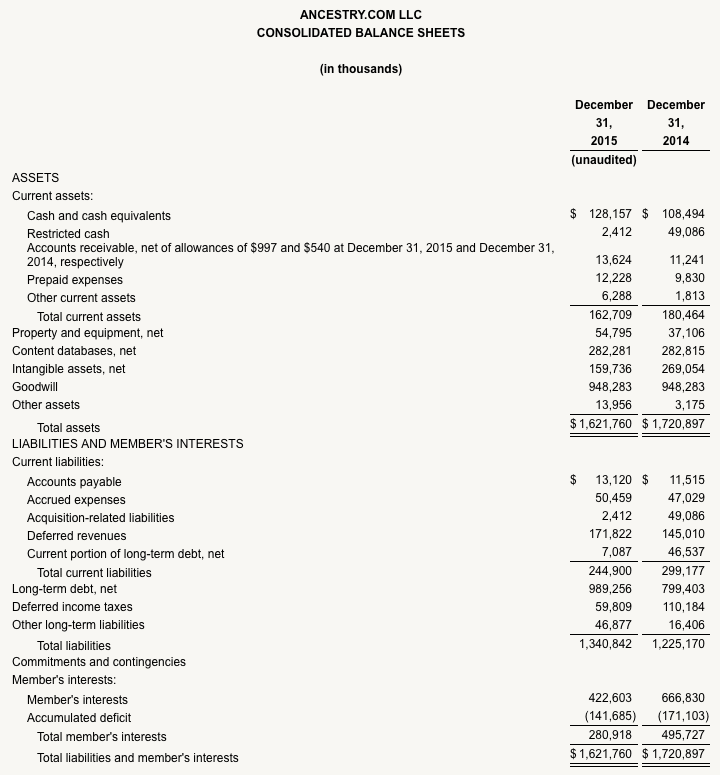
Exhibit 2:
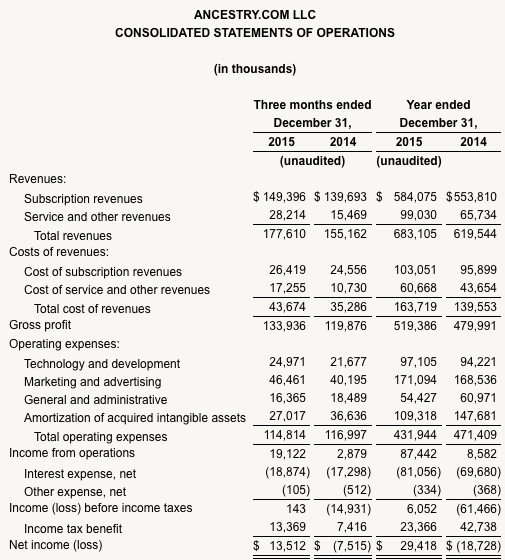
Exhibit 3:
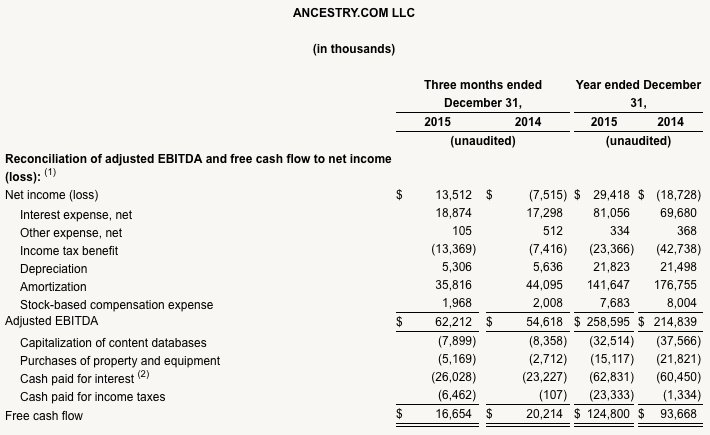
Exhibit 4:
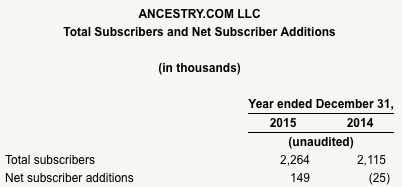
Exhibit 5:

Exhibit 6:
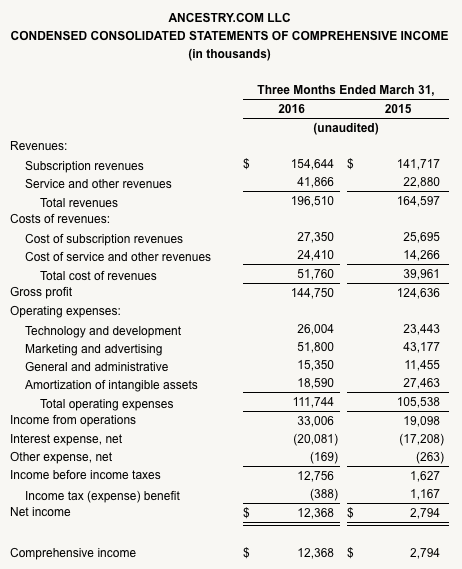
Exhibit 7:
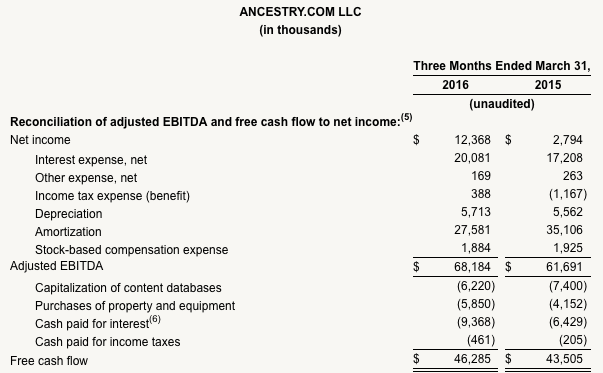
Exhibit 8:
